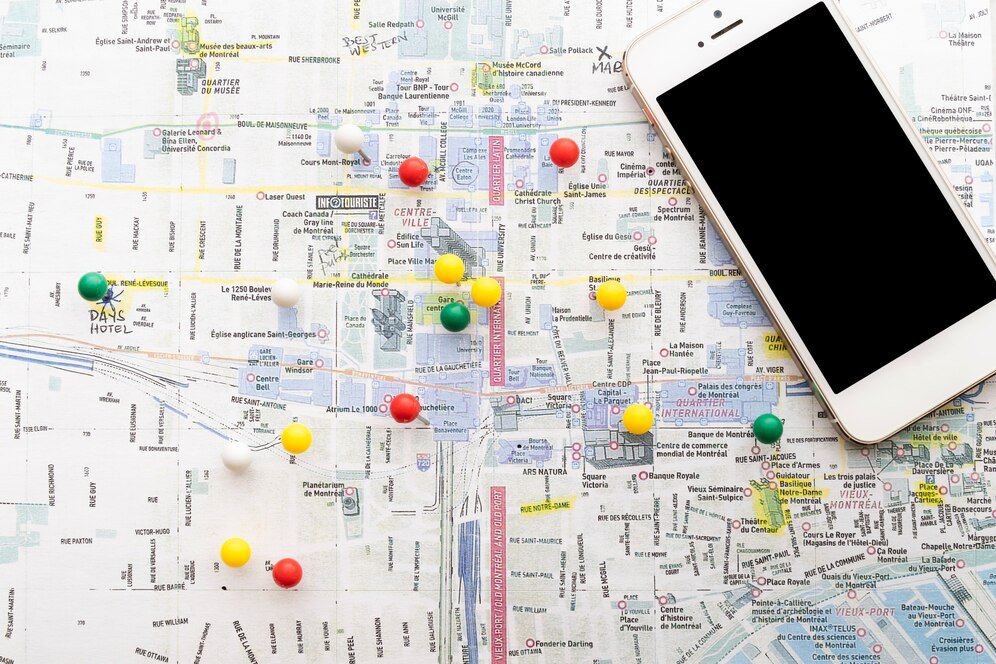In today’s bustling urban environments, navigating through the maze of streets and buildings can be a daunting task. However, with the advent of city center location maps, finding your way around has become much easier. These maps serve as indispensable tools for both residents and visitors, offering a comprehensive overview of the city’s layout and key landmarks.
Table of Contents
City center location maps are primarily designed to help people find their way around unfamiliar urban areas. Whether you’re a tourist exploring a new city or a commuter trying to reach your destination, these maps provide essential guidance on streets, landmarks, and points of interest.
Business and Tourism Promotion
In addition to aiding navigation, city center location maps also play a vital role in promoting local businesses and attractions. By highlighting popular restaurants, shops, and cultural sites, these maps encourage exploration and support economic activity within the city center.
Urban Planning Tool
City planners rely on location maps to analyze and visualize urban spaces. By mapping out infrastructure, transportation networks, and land use patterns, planners can identify areas for improvement and develop strategies to enhance the overall functionality and livability of the city center.
Features of a Good City Center Location Map
A well-designed city center location map should possess the following key features:
Clear Labeling
Labels and annotations should be legible and easy to understand, allowing users to quickly identify streets, buildings, and other landmarks.
Landmarks and Points of Interest
The map should highlight prominent landmarks, tourist attractions, and amenities such as parks, museums, and public facilities.
Transportation Routes
Transportation routes, including roads, highways, public transit lines, and bike paths, should be clearly depicted to facilitate efficient travel within the city center.
Scale and Orientation
A proper scale and orientation are essential for accurate navigation. Users should be able to gauge distances and directions with ease.
How to Use a City Center Location Map
Navigating a city center location map effectively requires some basic skills and knowledge:
Understanding Symbols and Legends
Familiarize yourself with the symbols and legends used on the map to represent various features such as streets, buildings, parks, and transportation routes.
Utilizing Digital Maps and GPS Technology
Take advantage of digital mapping platforms and GPS-enabled devices to access interactive city center location maps with real-time navigation capabilities.
Planning Routes and Exploring Nearby Areas
Use the map to plan your routes and explore nearby neighborhoods, attractions, and amenities. Look for alternate routes and points of interest along the way.
Examples of City Center Location Maps
City center location maps are available for major cities worldwide, catering to diverse needs and preferences. From traditional paper maps to interactive digital platforms, there are numerous options to choose from.
Challenges and Solutions
Despite their usefulness, city center location maps face certain challenges:
Keeping Maps Updated
City landscapes are constantly evolving, with new developments and changes occurring regularly. Maintaining up-to-date maps requires continuous data collection and revision processes.
Addressing Accessibility Concerns
Ensuring accessibility for all users, including those with disabilities, is essential. Maps should be designed with clear visuals and alternative formats to accommodate diverse needs.
Future Trends in City Center Mapping
Looking ahead, the future of city center mapping is poised for exciting developments:
Integration with Augmented Reality
Augmented reality technology promises to revolutionize the way we interact with city center maps, offering immersive and interactive experiences for users.
Real-Time Updates and Crowd-Sourced Data
Advancements in data collection and analysis enable real-time updates and integration of crowd-sourced information, ensuring accuracy and relevancy.

Conclusion
city center location maps serve as indispensable tools for navigating urban environments, promoting local businesses and attractions, and informing urban planning decisions. By leveraging innovative technologies and addressing evolving needs, these maps will continue to play a vital role in enhancing the accessibility and functionality of city centers worldwide.
FAQs
Are city center location maps only available in paper format?
No, city center location maps are available in various formats, including paper, digital, and interactive platforms.
How often are city center maps updated?
The frequency of updates depends on factors such as urban development and technological advancements, but efforts are made to keep maps as current as possible.
Can city center maps help with accessibility for people with disabilities?
Yes, efforts are made to design city center maps with clear visuals and alternative formats to accommodate diverse needs, including those of people with disabilities.
Are there specialized city center maps for tourists?
Yes, many cities offer specialized maps tailored to the needs of tourists, highlighting popular attractions, dining options, and transportation routes.
How can I contribute to improving city center maps?
You can contribute by providing feedback, reporting inaccuracies, and sharing relevant information with map providers and urban planners.
